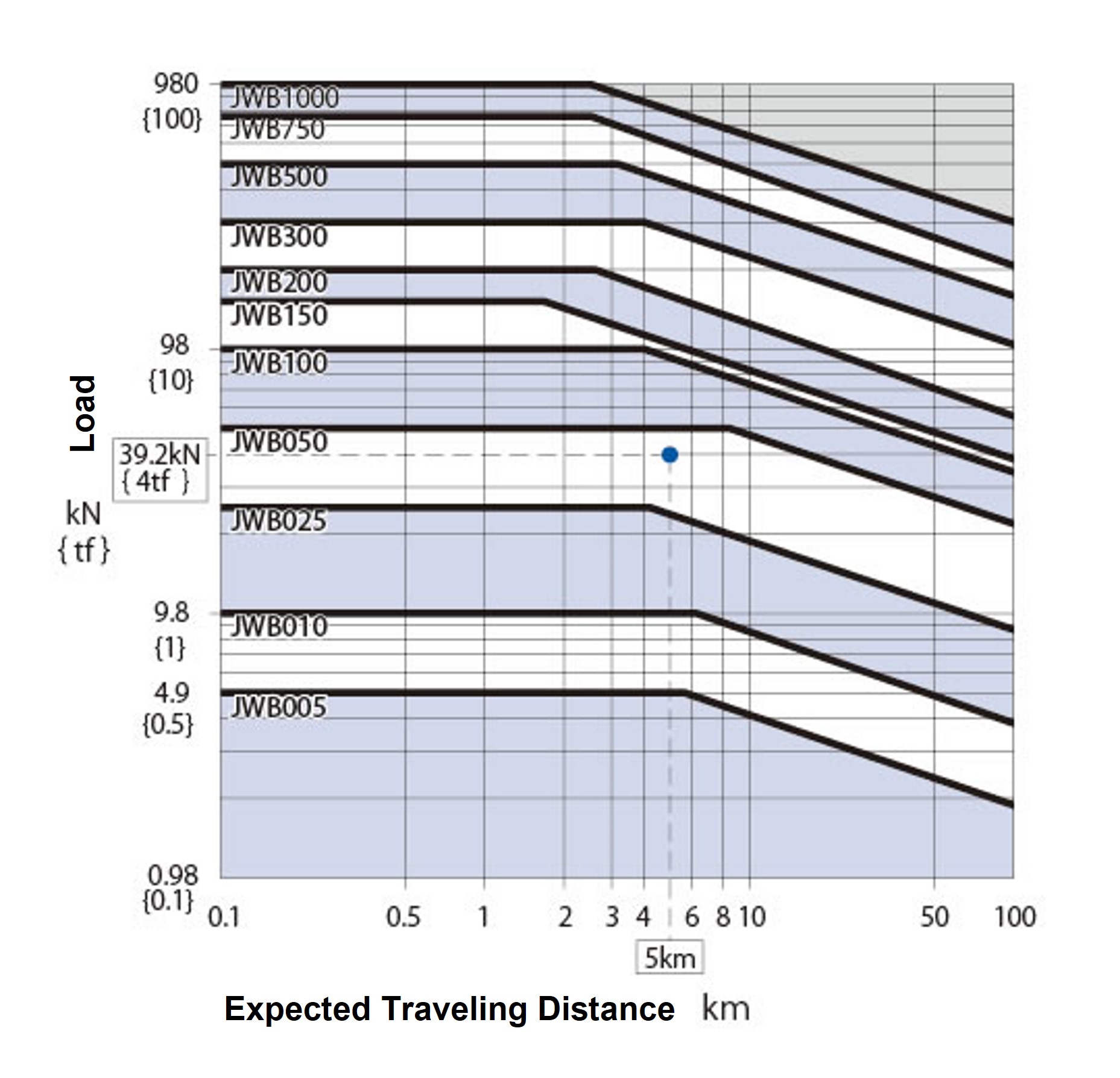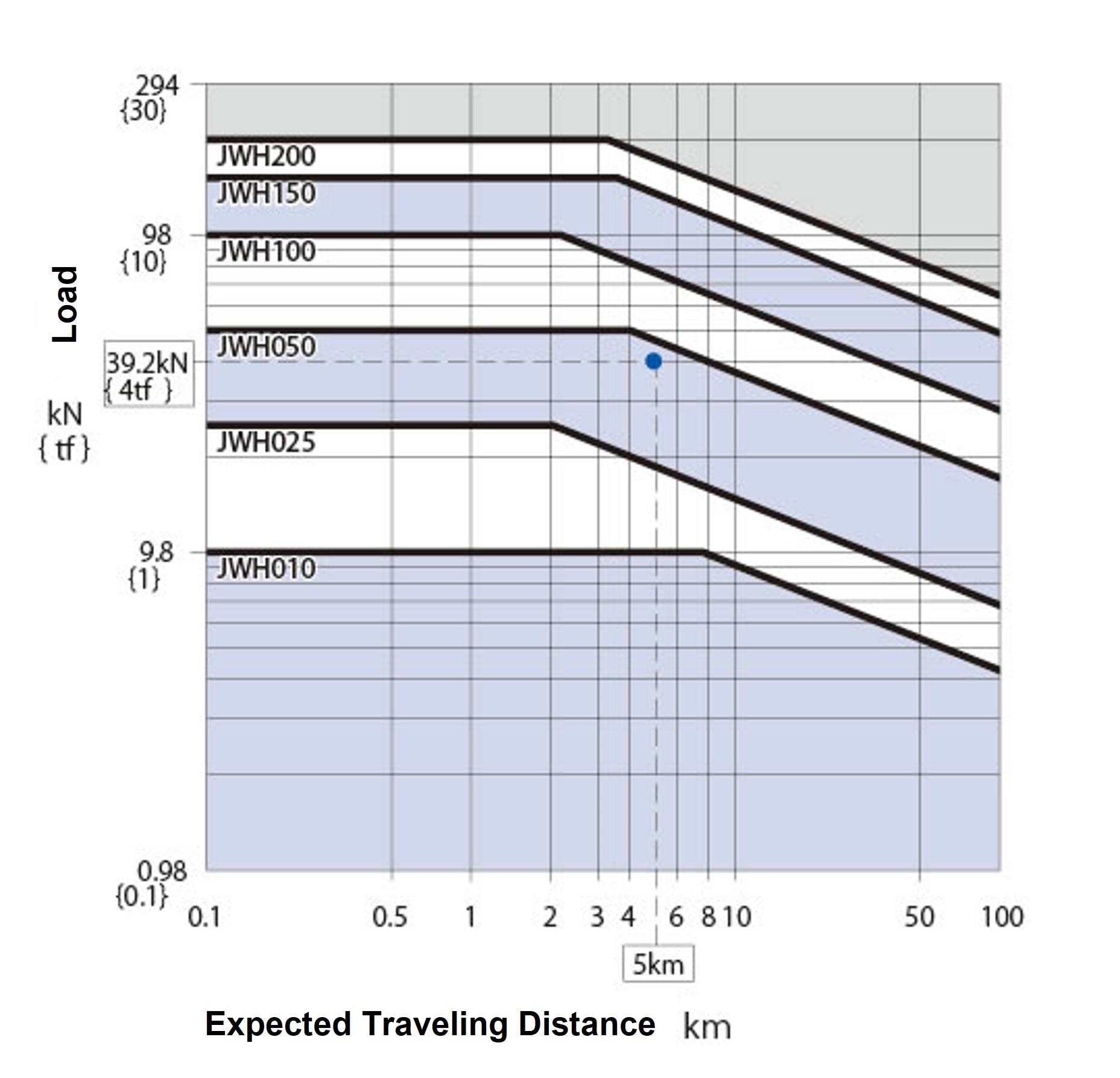Technical Data Linear actuator Linipower Jack Technical Data
Expected Travel Distance by screw type
The life of a ball screw is determined by flaking of the rolling surface caused by its fatigue.
Verify a life expectancy using these expected travel distance graphs.
However, in case of great impact or where lubrication or maintenance is not performed properly, the expected traveling distance becomes substantially shorter.
Expected traveling distance (km) = Actual load stroke (m)×Frequency of use (/day )×Number of operating days / year ×10-3×Expected number of years
The graphs below are based on life expectancy of L10.
L10 life expresses in traveling distance a life that can be reached by 90% or more of all ball screws.
If selecting a jack based on life, use the following graphs and determine the frame number first.
Each graph shows the equivalent load Pm 39.2kN {4tf} and the required expected travel distance 5km.
The coordinates of horizontal and vertical axes suggest suitable frame numbers. In this case, jacks JWB050, JWH050 or above are recommended.
If the load largely fluctuates in the middle of a stroke, use the following formula to calculate equivalent load.
PM = PMIN + 2×PMAX 3
PM:Equivalent load kN{kgf}
PMIN:Minimum load kN{kgf}
PMAX:Maximum load kN{kgf}
JWB

JWH

JWM
Trapezoidal screw life cannot be determined by the formula used to calculate a ball screw wear life. Use the information below as a reference.
- JWM050 or less ...5km(Average expected life )
- JWM100 or more ...1km(Average expected life )

